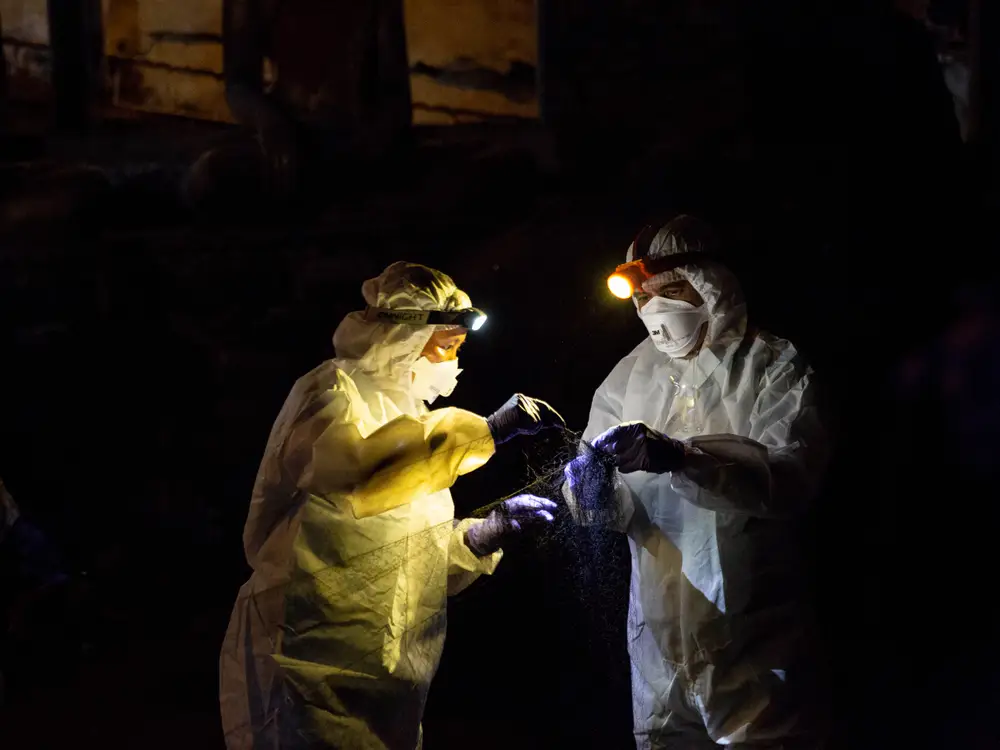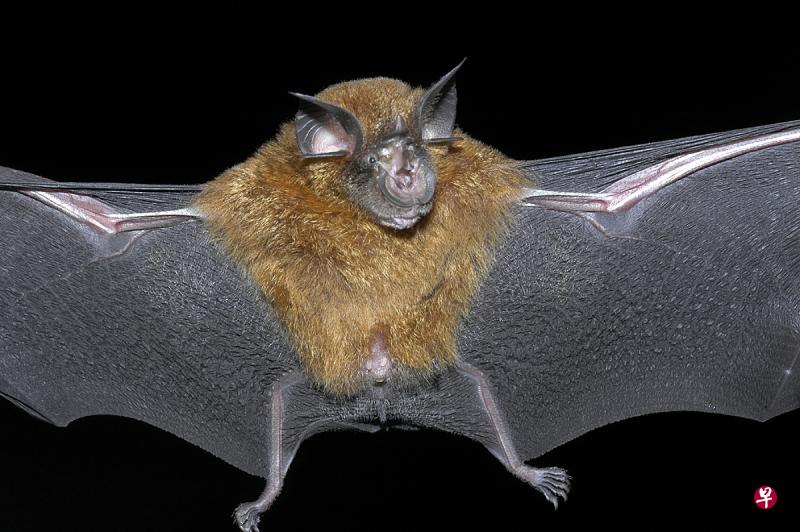400,000 people are infected each year with coronaviruses carried by bats, an early study suggests. Researchers say the data could help prevent future pandemics.
By Dr. Catherine Schuster-Bruce
9/19/2021

Lauren DeCicca/Getty
- Coronaviruses from bats could infect 407,422 people each year, a study said.
- The findings could help target areas for surveillance and stop human virus outbreaks, they said.
- About 478 million people live in regions where the bats are, the researchers said.
Viruses that are similar to the one that causes COVID-19 and are carried by bats infect hundreds of thousands of people each year, according to new research.
The study, led by scientists at US non-profit EcoAlliance, estimated an average of 407,422 people were infected annually with Severe acute respiratory syndrome–related coronaviruses (SARS-r-CoV) from bats.
The figure could even run into the millions, the study authors said in a paper posted Tuesday, but not all these viruses can cause illness or spread in people, they said.
The findings could be used to target areas for surveillance, which could help with earlier and more accurate identification of viruses that could cause the next human outbreak, they said.
Peter Daszak, president at EcoAlliance and lead author, said that “if you can stop this at the level of individual infections, you’ve got a much higher chance of stopping the next pandemic,” per Bloomberg.
About 478 million people live in regions where the bats are, mostly in southern China, eastern Myanmar, and northern Lao PDR, the study authors said.
“This is about finding communities within countries that are at risk and trying to block them from getting infected, helping people in those communities reduce public health threats,” Daszak said.
He was involved in the joint investigation into the pandemic’s origin between the World Health Organization and China.
Edward Holmes, professor of biology at the University of Sydney, who wasn’t involved in the research, told Bloomberg that this study was “probably the first attempt to estimate how often people are infected with SARS-related coronaviruses from bats.”
“Given the right set of circumstances, one of these could eventually lead to a disease outbreak,” he said.
The researchers first identified 23 bats species known to carry SARS-related viruses, and then mapped an area of 4.5 million kilometers where the bats lived. They then took into account the number of people living in the area, the likelihood of coming into contact with an infected bat, people’s behavior, and prior immunity.
The intermediate horseshoe bat, R. affinis, had the largest habitat, comprising about 1.9 million kilometers, an area where about 132 million people live, the researchers said.
The study’s methods haven’t been formally scrutinized by experts in a peer review.
Other animals carry viruses too
The study focused exclusively on SARS-related viruses in bats. But the viruses don’t always go directly from bat to human — there can be an animal in-between such as civets, raccoon dogs, or mink, which are commonly traded for food or bred for fur in the region, the researchers said.
Holmes said that the risk of infection with a SARS-related virus could be “even higher when you factor in all the possible ‘intermediate’ animal species.”
The researchers received funding from the National Institute of Allergy and Infectious Diseases, part of the US National Institutes of Health, a federal body.
研究:老挝蝙蝠携带的病毒最接近冠病原始毒株
文 / 陈慧璋
9/18/2021

(早报讯)研究人员发现,栖息在老挝北部石灰岩洞穴里的蝙蝠携带的冠状病毒,与严重急性呼吸综合征冠状病毒2(SARS-CoV-2,即冠病原始毒株)具有共同的关键特征。
彭博社报道,这一发现让科学家对2019冠状病毒疾病(Covid-19)的起因再靠近一步。
法国巴斯德研究所和老挝大学的研究人员在数百只马蹄蝠中寻找与导致冠病相似的冠状病毒,并发现了三个紧密匹配的受体结合域。
这项论文报告周五(17日)刊登在《自然》期刊。研究人员在报告中指出,自然界中存在着与SARS-CoV-2密切相关的病毒,这些病毒来自某些蝙蝠种类包括几种中华菊头蝠(Rhinolophus)。中华菊头蝠又称马蹄蝠(horseshoe bat)。
这项研究为冠病大流行始于蝙蝠传播病毒的假设提供了支持。
9月14日发布的另一项研究显示,在中国南部和东南亚一些中华菊头蝠的密集栖息地,每天可能发生大约1000起此类感染病例。
巴斯德研究所病原体发现负责人兼论文合著者埃洛伊特(Marc Eloit)说,在老挝发现的三种病毒——BANAL-52、BANAL-103和BANAL-236,是“迄今为止最接近SARS-CoV-2的祖先病毒。”
埃洛伊特说:“这些病毒可能促成了SARS-CoV-2的起源,并可能在本质上构成未来直接传播给人类的风险。”
Bats in Laos caves found to carry coronaviruses that share key feature with Sars-CoV-2
9/18/2021

VIENTIANE (BLOOMBERG) – Bats dwelling in limestone caves in northern Laos were found to carry coronaviruses that share a key feature with Sars-CoV-2, moving scientists closer to pinpointing the cause of Covid-19.
Researchers at France’s Pasteur Institute and the University of Laos looked for viruses similar to the one that causes Covid-19 among hundreds of horseshoe bats.
They found three with closely matched receptor binding domains – the part of the coronavirus’ spike protein used to bind to human ACE-2, the enzyme it targets to cause an infection.
The finding, reported in a paper released on Friday (Sept 17) that is under consideration for publication by Nature journal, shows that viruses closely related to Sars-CoV-2 exist in nature, including in several Rhinolophus, or horseshoe bat, species.
The research supports the hypothesis that the pandemic began from a spillover of a bat-borne virus.
About 1,000 such infections may be occurring daily in southern China and South-east Asia in areas with dense populations of bats from the Rhinolophus genus, a study on Tuesday found.
The three viruses found in Laos, dubbed BANAL-52, BANAL-103, and BANAL-236, are “the closest ancestors of Sars-CoV-2 known to date”, said Dr Marc Eloit, head of pathogen discovery at the Pasteur Institute in Paris, and co-authors.
“These viruses may have contributed to Sars-CoV-2’s origin and may intrinsically pose a future risk of direct transmission to humans.”
The receptor binding domains of three Laos coronaviruses are closer to that of Sars-CoV-2 than to the RaTG13 virus identified in Rhinopholus affinis bats from the Mojiang mineshaft in Yunnan province, that was regarded as the pandemic strain’s closest match.
The BANAL-236 virus has an almost identical receptor binding domain to the pandemic virus, according to the paper.
“The receptor binding domain of Sars-CoV-2 looked unusual when it was first discovered because there were so few viruses to compare it to,” said Dr Edward Holmes, an evolutionary biologist at the University of Sydney, who was not involved in the research.
Tracing ancestors
“Now that we are sampling more from nature, we are starting to find these closely related bits of gene sequence,” Dr Holmes said in an e-mail on Saturday. “Eventually, with more sampling, the natural ancestry of the entire Sars-CoV-2 genome will be revealed.”
None of the bat viruses isolated in Laos harbours a so-called furin cleavage site in the spike that facilitates cell entry. It is a feature of the Sars-CoV-2 virus that has led some scientists to theorise that it was created in a laboratory.
No evidence supporting the lab-leak theory has emerged. Last month, the United States intelligence community ruled out the possibility that Sars-CoV-2 was developed by China as a biological weapon, but no consensus was reached on its origin.
The lack of furin cleavage may be explained by insufficient sampling in bats, or by acquisition of the furin cleavage site during chains of transmission in an alternate animal host, or during unreported circulation in humans in the early stages of the outbreak when the virus may have caused few symptoms, the authors said.
“Our results pinpoint the presence of new bat sarbecoviruses that seem to have the same potential for infecting humans as early strains of Sars-CoV-2,” they said.
Guano collectors
People who spend time in or close to caves, such as guano collectors, are particularly at risk of being exposed.
Further investigations are needed to assess if people exposed to bats have been infected by one of these viruses and whether they have antibodies that may provide protection against subsequent Sars-CoV-2 infections.
“This paper is really interesting and we need more research like it,” said Dr Maria Van Kerkhove, the World Health Organisation’s technical lead for Covid-19, in an e-mail.
The researchers studied 645 bats from 46 species captured on four sites – in Fueng and Meth districts of Vientiane province, and in Namor and Xay districts in Oudomxay province – between July last year and January this year.
The bats live in the limestone karstic terrain common to China, Laos, and Vietnam in the Indochina peninsula.
The paper highlights the diversity of Sars-CoV-2-like viruses present in bats in South-east Asia, Dr Holmes said.
“Continual sampling is the only way to understand the origins of this virus and it is important that more sampling is done throughout China as this remains the most likely place of origin,” he said.
“This study emphasises that bat coronaviruses that have the potential to infect humans readily exist in nature and could emerge at any point. This is the clear risk for the future.”



